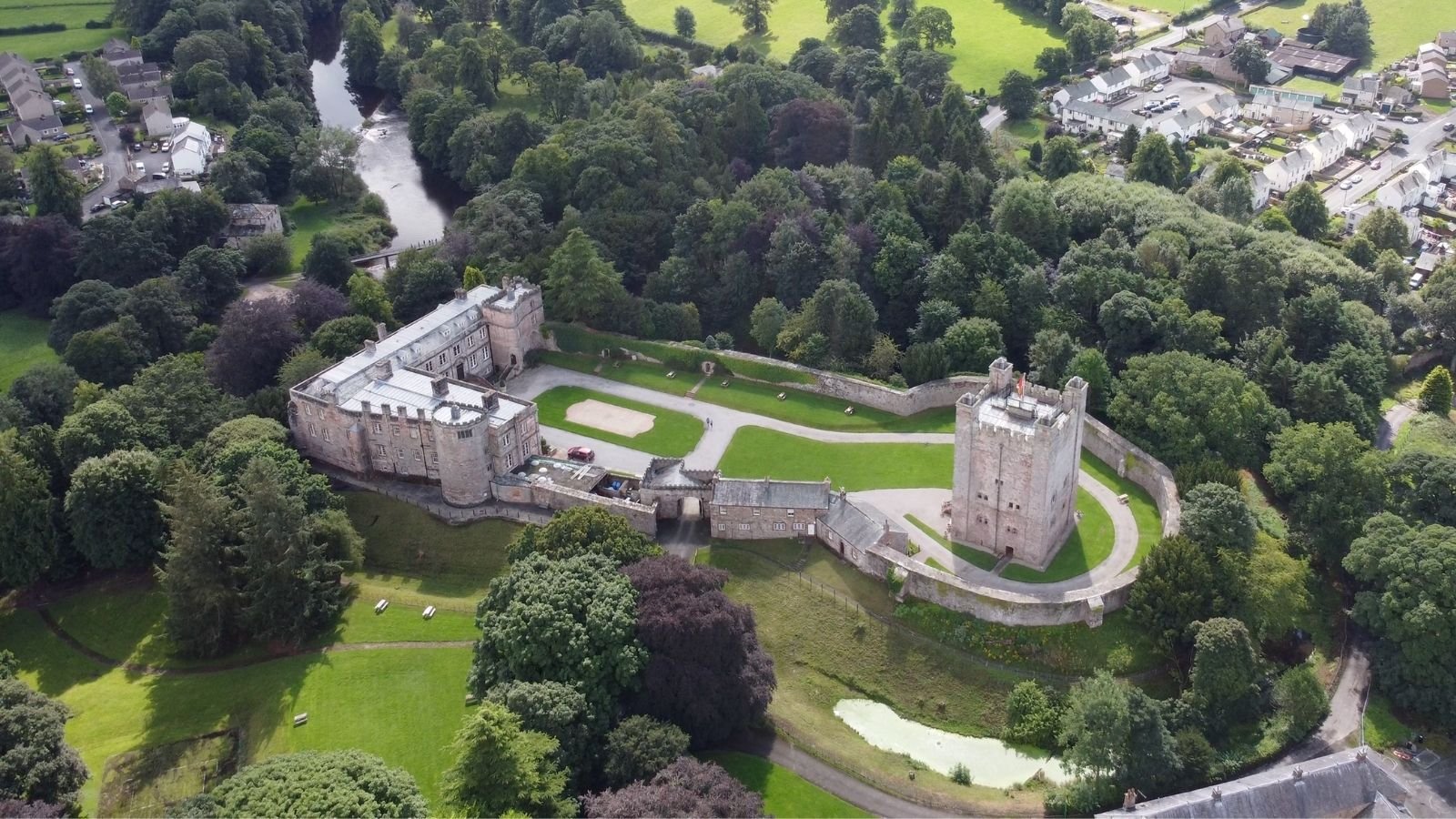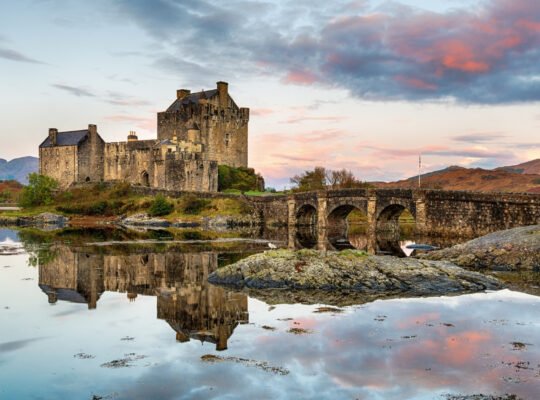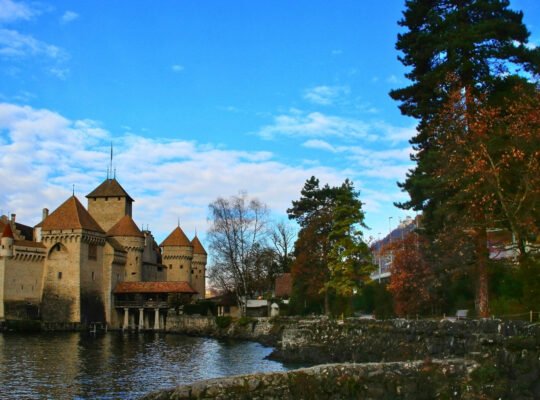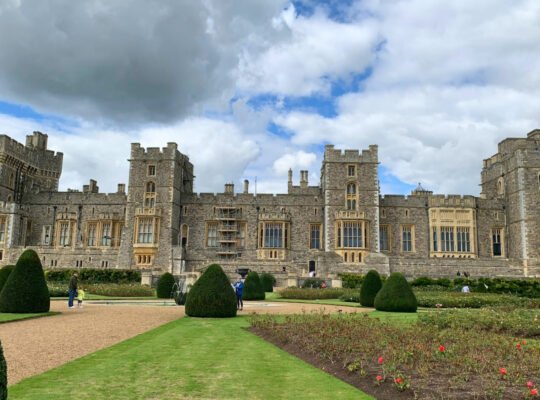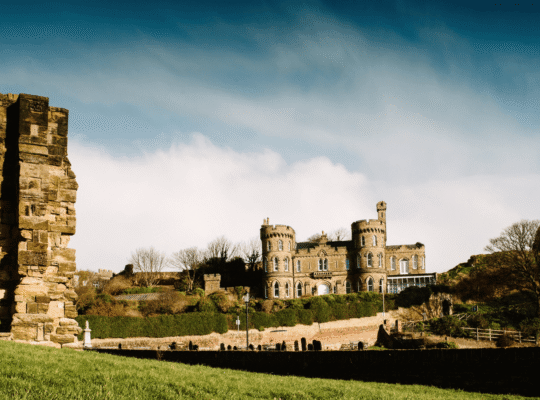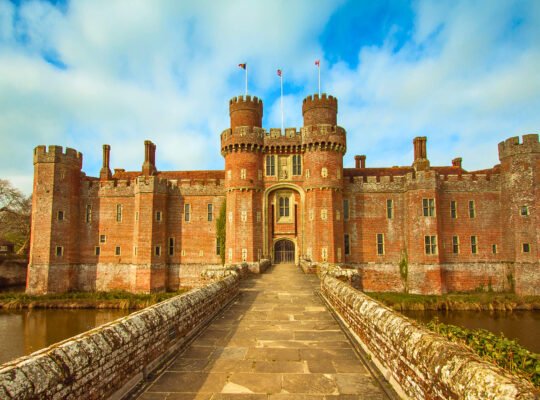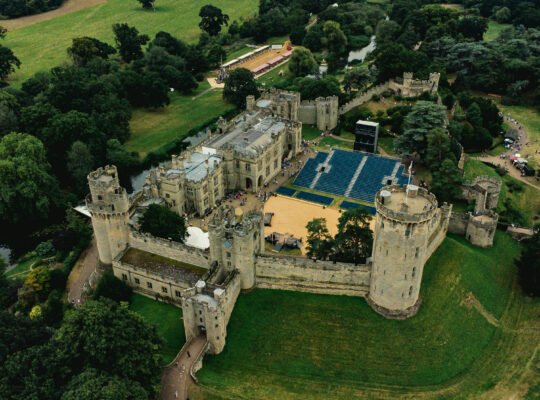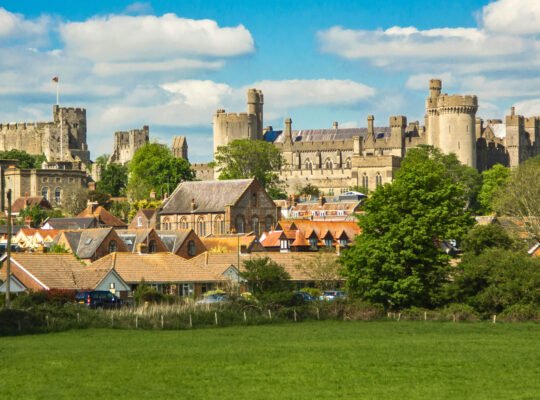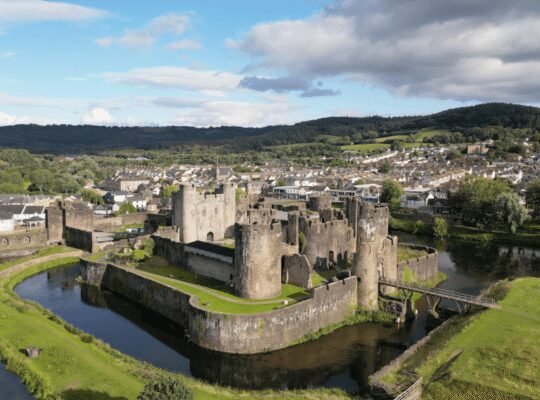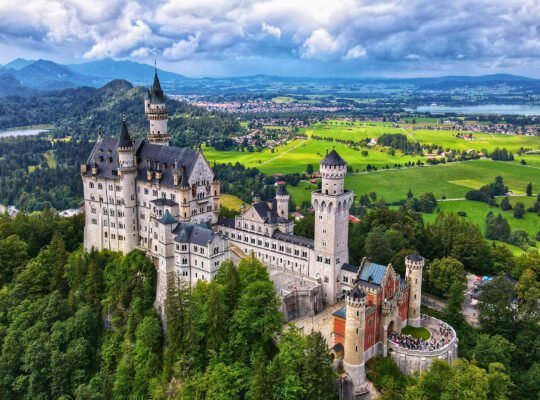As autumn deepens across Europe and North America, castles are glowing in the soft light of October — and the news this week is just as rich as the season’s hues. From major restoration milestones and property headlines to fresh archaeological insights and community celebrations, the castle world continues to blend ancient stone with modern ambition.
🧱 Herstmonceux Castle Nears Restoration Finish
After nearly two years of work, Herstmonceux Castle in East Sussex — one of England’s most romantic red-brick landmarks — is finally free of scaffolding.
A 2023 safety closure had forced Queen’s University (Canada), which operates Bader College on the site, to undertake an ambitious £multi-million restoration to prevent further decay. Now, with the parapet walls rebuilt, corbels replaced, and centuries-old bricks carefully restored, the castle once again stands proud across its moat and lawns.
University principal Patrick Deane called Herstmonceux “an exceptional place,” noting that quinquennial inspections will now ensure its longevity. The project has been widely praised by heritage groups as a model for sustainable maintenance, blending modern conservation standards with respect for Tudor craftsmanship (CBC News).
For castle lovers, 2026’s planned grand reopening will mark a triumphant moment — not just for Herstmonceux, but for the ongoing fight to preserve Britain’s architectural soul.

🏗️ Revival Wave: Europe’s Castles Reopen
Across Europe, a quiet renaissance is underway. Castles long sealed off for safety reasons are reopening after years of painstaking repair. In France, Germany, and Scotland, scaffolding is coming down and stonemasons are finally stepping back, revealing restored towers and gates unseen by the public for decades. The Caithness Castle is an example (Yahoo News).
Visitors touring these reopened sites are encountering a rare sight: conservation in action. Craftsmen still chip away at blocks of limestone, restorers polish faded frescoes, and curators prepare new exhibits that bridge the medieval and modern. It’s part of a broader movement — heritage boards and tourism agencies realizing that investing in living history pays cultural and economic dividends.

🎃 Haunted Halls & Harvest Festivals
October is when castles shine brightest in the public imagination — their looming silhouettes perfect for autumn storytelling. Across Britain and Europe, Halloween-themed events are transforming ancient halls into stages for ghost tours, pumpkin nights, and costumed parades.
At Warwick Castle, evening “Fright Nights” are returning with torchlit walks, staged hauntings, and costumed actors retelling the castle’s darker legends. In Ireland, several Norman strongholds have joined the festivities with candlelit dinners and medieval music inside great halls once used for royal feasts (Castle After Dark).

⚒️ Medieval Craft Reimagined
Modern archaeologists and builders are turning back the clock at sites like Guédelon, France’s world-famous experimental medieval construction project. Using only 13th-century tools and methods, teams continue to raise towers, mix lime mortar, and shape stone blocks by hand — revealing not only how castles were built, but how medieval engineers mastered sustainability long before the word existed (Guédelon, Archaeology Magazine).
These projects have become open-air classrooms for architects, historians, and tourists alike, illustrating how the practical genius of medieval builders still informs today’s restoration science.

💼 Market Watch: Castles for Sale
It’s been another busy week in the world of castle real estate — where history, beauty, and bold price tags meet.
| Castle Name | Location | Highlights | Price / Status | Notes |
|---|---|---|---|---|
| Appleby Castle | Cumbria, England | Norman keep, 25 acres, intact interiors | Auction – Oct 30, 2025 | Landmark opportunity for preservation-minded buyers |
| Kinloch Castle | Isle of Rum, Scotland | Edwardian opulence, museum heritage | £750,000 | Needs full restoration; future of public access uncertain |
| Couston Castle | Aberdour, Scotland | Restored, lochside fairytale | £2.65 million | Turnkey historic residence |
| Bellister Castle | Northumberland, England | Tower house with gardens | £2.5 million | Renovated, scenic Tyne Valley setting |
| Ayton Castle | Berwickshire, Scotland | Gothic revival masterpiece | £3.25 million | Striking design, ready for occupancy |
| Castle on Stagecoach | Arkansas, USA | 95 acres, cave bar, wedding venue | $3.8 million | A rare American “castle estate” |
| Cortes Island Castle | British Columbia, Canada | 5-story unfinished project | $440,000 | Ocean views, renovation potential |
Among them, Appleby Castle is the standout story. The 12th-century Norman fortress, once home to Lady Anne Clifford, goes to auction at the end of the month — and could set a new benchmark for UK heritage property sales (Knight Frank).
Meanwhile, Kinloch Castle continues to attract global attention with its modest price but daunting challenges. Locals hope the eventual buyer will balance private restoration with public access — a debate symbolizing Scotland’s broader struggle between preservation and privatization (Country Life).
For those seeking more whimsical options, Australia’s market of “castle-style” luxury homes — complete with moats, towers, and drawbridges — continues to grow, offering a fantasy alternative without the centuries of upkeep (RealEstate.com.au).

🏛️ Preservation Triumphs & Ongoing Challenges
The contrast between Herstmonceux’s success and Kinloch’s uncertainty captures a key truth of heritage stewardship: castles are fragile ecosystems requiring constant care and funding.
Herstmonceux’s proactive maintenance plan — with its new cycle of inspections — could serve as a model for heritage institutions worldwide. By contrast, Kinloch’s survival now hinges on private investment and local advocacy. These cases show how castles straddle two worlds: symbols of continuity and living laboratories for the balance between conservation, tourism, and modern use.
Elsewhere in the UK, two other estates — a Grade II-listed hilltop castle near Edinburgh and a 325-acre moorland estate in the Borders — entered the market this week, both positioned as conservation-meets-commercial projects where eco-tourism could fund future restoration (Castleist).

🏰 Hidden Stories & Castle Culture
From travel bloggers to drone photographers, castles continue to dominate digital storytelling. This autumn, castle-related content has surged across social media platforms, with creators filming haunted tours, sunrise drone flyovers, and 60-second “castle history shorts” that have collectively amassed millions of views.
Museums are catching on too: Dublin Castle’s Artistic Islands exhibition and York Castle Museum’s Autumn at the Castle Café Gallery showcase how creative institutions are reinterpreting castle spaces for contemporary audiences (OPW, York Castle Museum).
Meanwhile, restoration teams at Balintore Castle and Chambord have been sharing behind-the-scenes progress online — a growing trend in transparency that’s helping to attract both volunteers and donations.

🔮 What to Watch Next Week
- The Appleby Castle auction on October 30 could redefine how UK heritage assets are valued.
- Kinloch Castle’s potential sale will test Scotland’s conservation model.
- French and German restorations continue to roll out, supported by new EU cultural grants.
- Expect seasonal travel buzz from European Halloween castle tours and heritage photography contests.

📌 Final Word
From Herstmonceux’s triumphant rebirth to Kinloch’s uncertain fate, this week reveals both the fragility and resilience of castles worldwide. These buildings are not frozen in time — they breathe, evolve, and demand imagination to survive.
Whether preserved, purchased, or reimagined, castles remain timeless testaments to creativity and endurance. And as autumn paints their walls with light and shadow, the world seems to rediscover what these fortresses have always stood for: power, beauty, and the persistence of history itself.

